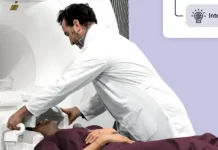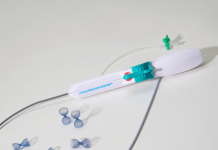Digital medical technology company Brainlab has announced 510(k) clearance for its Spine Mixed Reality Navigation by the Food and Drug Administration, marking the system’s official launch in the US.
This surgical navigation tool provides mixed reality support, enhancing the “ergonomic view” for surgeons by integrating crucial navigation data directly into their line of sight during procedures.
The solution leverages the company’s optical navigation system technology and the latest advancements in mixed reality.
Related: Dornier MedTech launches new ureteral access sheath and ureteroscope in U.S.
This integration offers surgeons a visual aid within the sterile field, adding an extra layer of confidence surpassing that of conventional surgical technologies.
The system’s real-time visualisation capabilities allow for placement of pedicle screws in accordance with the surgeon’s preoperative or intraoperative plans.
This feature is particularly beneficial in minimally invasive surgery cases, where identifying target areas can be especially difficult.
Boston’s Beth Israel Deaconess Medical Center spine surgeon, and a user of Brainlab navigation systems, Dr Jason Pittman, is said to have played a pivotal role in providing clinical feedback during the development of the Spine Mixed Reality Navigation.
Pittman highlighted the ergonomic advantages of the system, noting that it allows surgeons to view essential navigation information without diverting their attention from the patient’s anatomy.
At a usability summit, participants experienced the benefits of the system’s 3D ‘floating view’ and virtual navigation displays.
These features negated the need to alternate focus between the operative site and the navigation screen, enabling surgeons to maintain steady concentration on the anatomy.
Brainlab president Sean Clark said: “We are ushering in the future of spine surgery, putting groundbreaking tools in the hands of US surgeons. European surgeons are already experiencing the power to see, critically observe and optimise clinical procedures with Spine Mixed Reality Navigation.
“This solution delivers hyper realistic 3D visuals and extended visualisation, while the workflow, instruments and navigation provide familiar and expected precision. Together with our customers, we are driving accuracy in the OR.”






